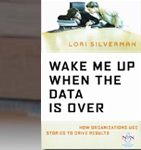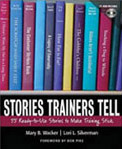WooHoo! When Karen Dietz and I were writing Business Storytelling for Dummies, we searched high and low for the latest and greatest research on story use in business to incorporate into the book. Well, here’s a new piece of research by Keith Quesenberry and Michael Coolsen at Johns Hopkins cited in “The Irresistible Power of Storytelling as a Strategic Business Tool” by Harrison Monarth.
It seems these two researchers looked at 108 Superbowl commercials and found that the structure of the content in the ad — plot development — matters. So much so that they were able to predict that the Anheuser-Busch “Puppy Love” spot would be the most popular spot in 2014. Yes! Structure matters. This means that telling a story off-the-cuff will likely not gain you the impact you desire. You need to spend time ensuring that the structure unfolds the story properly.
Karen and I summarized the story structures we presented in the Dummies book in a bonus article called “11 Structures for Business Storytelling.” We agree with Monharth that you first need to understand the most core of structures which he highlights in his article.
There were a couple other items that captured my attention in this article. Here’s the comment I provided to Monarth about them.
Harrison,
As the author of three books on business storytelling, the latest being Business Storytelling for Dummies written with Karen Dietz, PhD (Wiley, Dec 2013), I am grateful for your article. As we wrote this book (which is more the latest and greatest info/tips on storytelling than the basics), we attempted to include the most recent research – the Quesenberry outcomes are like icing on the cake. It confirms what we’ve written in the chapter on marketing/branding.
There are a couple things I’d like to also mention. First, I believe that touching human emotions is necessary, but not sufficient, to move people to action. Why? We are bombarded daily by emotional stimuli and are in some ways becoming immune to them.
To this end, I believe people need to be touched physically, cognitively, emotionally and spiritually by a story. The spiritual piece isn’t easy to describe. It has two facets – hearing a story that hits at the core of your being – at the soul level. In business, Karen and I also equate this to what we call “the ultimate embodiment of good.” Like that expressed by Mrs. Meyers Clean Day in its short video anecdotes (they fall a shy short of being well constructed stories but demonstrate what we mean).
Second, Kendall Haven’s book, Story Proof, summarizes 350 research studies on story. It’s a great resource.
Finally, strategic storytelling to Karen and me is broader than what you discuss in this piece. We devote an entire chapter in the Dummies book to discussing how to entrench story as a core competency into the DNA of an organization’s internal and external functions. My 2006 book, Wake Me Up When the Data Is Over, covers this subject too. To date, we have found no organization that has taken story to this level of strategic impact. And this is after providing more than 81 ROI examples of the use of story in business in the Wake Me Up book. We still have a long ways to go …
Again, thank you for bringing this new research to the forefront. It is good to hear and learn from it!
Kind regards,
Lori Silverman
What are your reactions to this new research and the HBR blog article? Please share them here.








